Fluid motion
estimation
(back)
Description
The motion estimation problem for image sequences
depicting fluid flows has many important applications in
oceanography, meteorology, climatology, or experimental
fluid dynamics.
The problem is to recover a dense motion field (one vector
per pixel) from two consecutive images.
The method we propose allows to represent and estimate
this
optical flow with a reduced number of
parameters. The method is based on a discrete smooth
representation of the vorticity and divergence of the 2D
vector field.
The vorticity is written as a sum of
vortex particles, and the divergence as a sum of
source particles (regularized Dirac measures).
The motion field (obtained by Biot-Savart integration) is finally described by a set
of basis functions and their associated parameters.
The motion estimation problem becomes then a minimization
problem with respect to the basis functions
parameters. The minimization functional relies on an
integrated version of mass conservation principle of fluid
mechanics.
Results
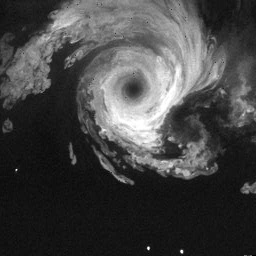 |
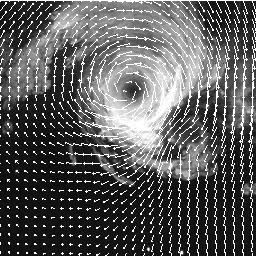 |
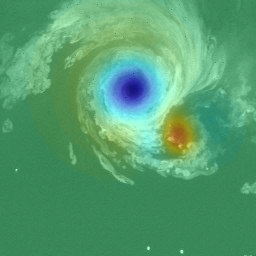 |
Vortex launch at tipe of airplane wing
(Image sequence provided by ONERA) |
Estimated motion field |
Estimated vorticity |
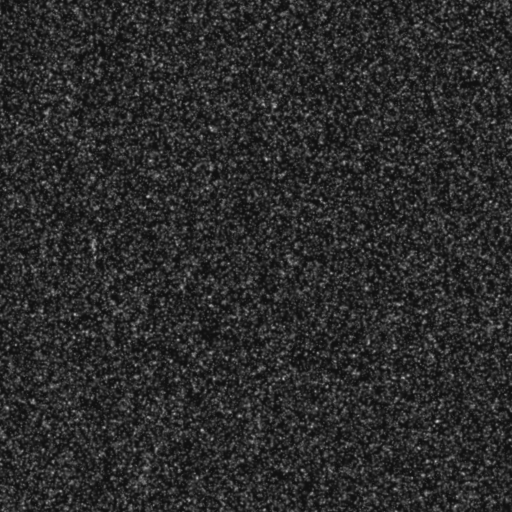 |
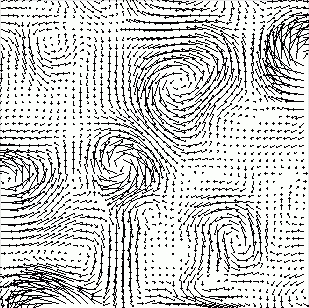 |
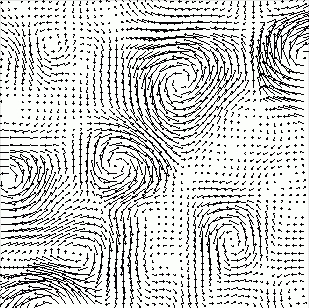 |
Particles transported by 2D turbulent
flow
(simulation provided by the CEMAGREF) |
True synthetic motion field |
Estimated motion field |
References
A. Cuzol, P. Hellier, E. Mémin. A low dimensional
fluid motion estimator. submitted.
A. Cuzol, E. Mémin.
Vortex and source particles for fluid motion estimation. In
5th Int. Conf. on Scale-Space and PDE methods in Computer Vision, Scale-Space'05, Hofgeismar, Germany, Apr. 2005.
pdf